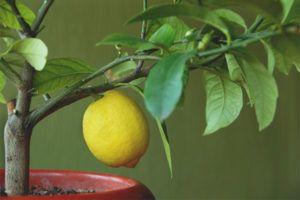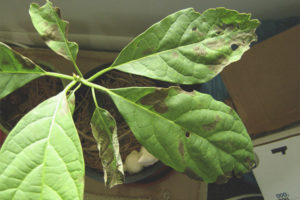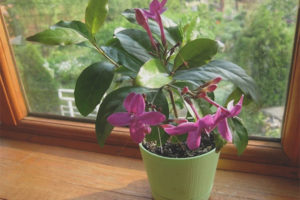The content of the article [hide]
Why do Kalanchoe leaves turn yellow. What to do? Such a request is often entered into search engines by people who are too actively caring for their indoor flowers. Let's look at why this is happening.
Wrong watering
Most gardeners are not aware that Kalanchoe is a succulent. Water is poured with a generous hand, heartily and often. They do not even allow the soil in the pot to dry thoroughly. But the plant is quite capable of doing without watering for quite some time. And the overflow leads to severe decay of the roots. And if it is very simple to save the Kalanchoe that has subsided from drought, then yellowing from overflow almost never recovers.
Signs Leaflets turn yellow throughout the plant, soft, watery. Kalanchoe itself looks oppressed, often the shoots bend under the weight of the water inside the leaf plates.
What to do. Urgently save! The usual cessation of watering, as some sources recommend, will do nothing. The root system has already begun to rot. You must immediately stop this process, otherwise the plant will die.
For this, Kalanchoe is pulled out of the pot, then the roots are thoroughly washed under a stream of warm water. Now you need to carefully cut off everything rotten, smelling bad and dark in color. Slices sprinkled with crushed activated carbon, leave to dry in the open air for at least an hour.
After this, Kalanchoe is transplanted into another soil and a new pot. In the old, there may be many pathogenic bacteria.
In the future, strictly monitor the moderation of watering. Recommended pattern: the topsoil in the pot has dried, plus another 5 days. By the way, they’re not particularly zealous. The soil is only slightly moistened. No need to wait for water to flow from the drainage holes. Kalanchoe does not like this. Otherwise, the root system, like a pump, absorbs absolutely all moisture. And the unknowing owners will begin to water the plant again, having seen the dry earth in a pot. The circle will close, the leaves will begin to turn yellow again.
Incorrect lighting
Signs of a lack of light. Leaflets turn yellow, fade. Shoots become thin and long, like matches.
What to do. Kalanchoe loves bright light. But no more than 10 hours a day. Therefore, there are only 2 outputs:
- Artificially create short daylight hours by covering the Kalanchoe with opaque material.
- Choose a place of detention where the lighting duration will be normal. For example, the eastern window sill.
By the way, if the Kalanchoe is already stretched and yellowed, then it will not work to save the shoots. They will no longer become a lush compact bush. They will have to be cut. Just do not throw it away. Such shoots are perfectly rooted, so why not get some new plants? From them then it will be possible to easily form a beautiful crown with proper care.
Dry air
The second most frequent cause of yellowing of leaves is Kalanchoe, especially during the heating season. Few people think about how hot heating radiators affect a plant.
Signs The tips of the leaves turn yellow throughout the plant, then they begin to dry completely.
What to do. Humidify the air around the Kalanchoe as often as possible. There are several ways to do this:
- Spray with warm clean water from a spray bottle.
- Put a few extra tanks of plain water around.
- Cover radiators with wet towels or blankets.
- Place a pan with expanded clay, peat or sphagnum near. Constantly water them.
If you cannot provide the Kalanchoe with normal moist air, then it is better to artificially enter it into a state of rest. Put in a cool place (+ 14-16 ° C), reduce watering. In this position, the plant can be no more than 2 months, and then you have to come up with something to increase the humidity. Otherwise, the tips of the leaves will turn yellow.
Heat
Signs The leaves turn yellow throughout the plant, look boiled, wrinkled, but not dry. The plant as a whole looks healthy.
What to do. Stop frying Kalanchoe. It loves bright light, so many flower growers settle it on the south or west window. This is quite acceptable, only in recent years the summer of the middle strip presents incredible surprises. In the sun, the thermometer creeps much higher than + 40 ° C. As a result, the plant simply fries.
It is imperative to shade Kalanchoe in the very sunshine. This can be done with white paper, a dense light cloth. As a result, the plant will receive enough lighting, but will do without sunburn. And it’s better to rearrange the pot by the curtain altogether. For example, on a table or bedside table near a window. Then you don’t have to block the shade every day.
Natural wilting
Signs Leaflets sometimes turn yellow at the bottom of the stem, gradually dry up and fall off. The plant looks peppy, grows well and blooms.
What to do. Do not change anything! Everything suits your pet. And the loss of a certain amount of lower leaflets is a normal natural aging process. Do not interfere with the usual microclimate. Kalanchoe feels great.
Wrong fertilizer
An overabundance of nutrients is as fatal as a deficiency. Immediately after the transplant, some comrades zealously begin to pour dressings in a pot. What about Kalanchoe? Meekly absorbs everything with the root system. That's just leaflets refuse to perceive such gluttony.
Signs Leaf plates turn yellow first, then turn brown. A red border may appear, brown wet spots. The plant looks unhealthy, does not bloom. A large number of loose shoots appears, the tops of the head can begin to rot.
What to do. Stop eating yourself and stop stuffing an innocent flower. This is a succulent, he used to live in very cruel conditions. And you palm off fertilizers to him!
Normally, you need to reduce by 2 times the dose of trace elements recommended by the manufacturer. Then all this good will benefit. Too much always hurts. Have you ever seen fat people full of health? There are none. So why should it be different with Kalanchoe? Always think before pouring mineral water into the water for irrigation.
Tip. To avoid mistakes, use long-lasting fertilizers. Just put the tablet or granule in the pot. Kalanchoe itself will take as much food as needed during the next watering.
Pests
Signs Leaf plates change pigmentation throughout the plant, sticky spots and small dots appear. Then they grow.
What to do. Open eyes. Indeed, on the leaves of Kalanchoe it is very difficult not to notice uninvited guests. Insects are very clearly visible to the naked eye, especially on the underside of leaves.
Treat the victim immediately with any systemic insecticide. Just be sure to look for the phrase "allowed for indoor plants" on the packaging. And strictly follow the dosage.
It is advisable to quarantine temporarily so that the remaining flowers are not infected. If necessary, the treatment is repeated again after about 7-10 days.
Disease
Excessive watering or too cold air often lead to various diseases. As a rule, the owners realize this too late.
Signs The leaves turn yellow very quickly, then become covered with a bluish coating. Or a whitish fluff.The plant withers, then dies.
What to do. Of course, you can try to save Kalanchoe by spraying with a fungicide. But even if it recovers, the species will have a very unpresentable appearance. What is the beauty in a long bald stalk with a bunch of curves of deformed leaves on the crown? Still, not a palm tree.
There is only one way out of this situation. You will have to chop as many healthy cuttings as possible in order to try to root them and grow a new Kalanchoe. As a rule, there are no problems with this, the shoots gain strength very quickly, build up the root system and grow.
And do not grieve for the loss. In any situation, you need to be able to see your advantages. But you will have a lot of young healthy plants instead of one sick and shabby poor fellow.
Now you know why Kalanchoe leaves turn yellow. What to do? - also in the know. Therefore, you can provide your pet with decent living conditions at home and without yellowing. And he will thank you with lush green foliage and fabulous flowering.
Video: Kalanchoe Care and Growing Secrets












Submit